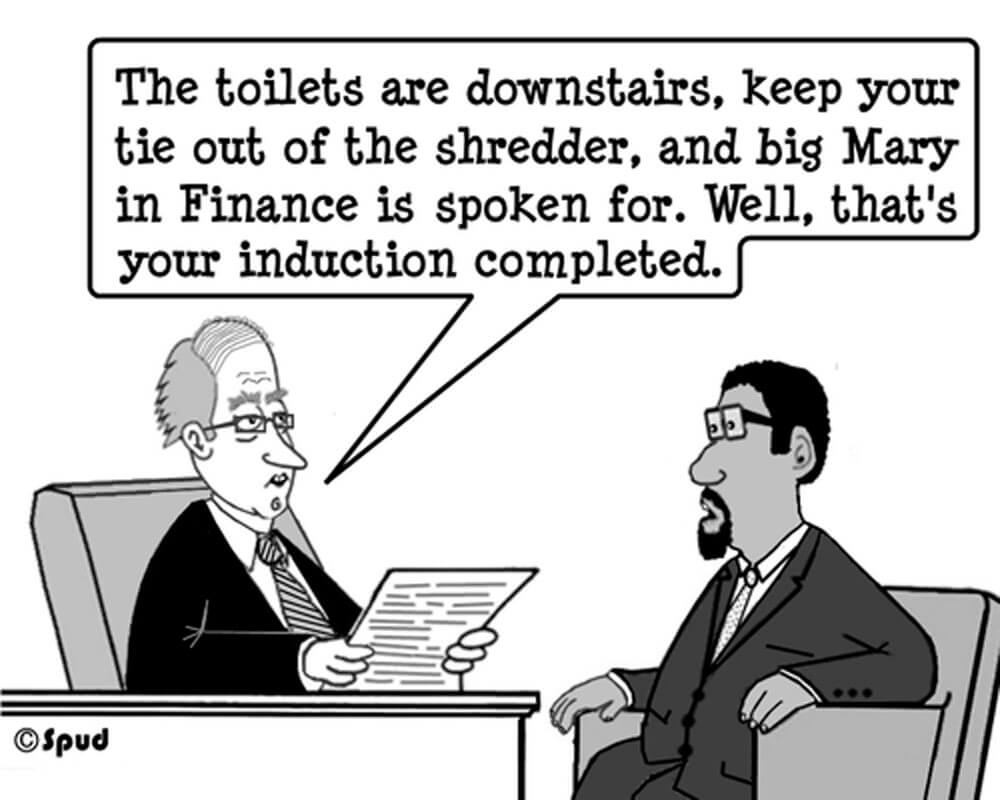
06 Jun Engaging your newest arrival
The “war on talent” has been talked about, written about and strategised over for the past few decades: talent is an organisation’s most valuable asset and as our clients’ preferred recruitment partner, we work hard to source, select and secure the very best candidates to meet our client’s needs. We take pride in matching the “best fit” candidates (and, if we do say so ourselves, our success rate is darn impressive!).
However, there have been a couple of occasions recently where we have been surprised at the on-boarding (or rather lack of on-boarding) from some organisations. Feedback from placed candidates tells a very sorry tale about the lack of care and consideration given to welcoming them and this poor management can have real implications beyond the individual’s engagement levels; it can damage your employer brand.
What is on-boarding?
On-boarding refers to an end-to-end process of genuinely welcoming and connecting with new employees and successfully integrating them into your business via a range of engagement processes. On-boarding incorporates orientation and induction activities and starts with confirmation of employment and concludes at the end of any formal probationary period.
An effective on-boarding process can help support integration and engagement, develop realistic job expectations and enhance performance outcomes. Employees who are engaged in a holistic on-boarding program early-on in the employment relationship feel better about their choice of new employer and usually settle in very quickly.
Without an effective on-boarding process, new employees, even the most senior ones, may start to feel disillusioned. This of course can lead to poor integration, low morale, loss of productivity and a failure to work to their full potential. In extreme cases, new employees may leave the organisation prematurely, resulting in additional recruitment costs, lowering of employee engagement & satisfaction, and damage to your organisational culture and employer brand.
Our top tips for successfully on-boarding your new talent:
Tip 1 – Open the communication channels: Throughout the on-boarding process, there is no such thing as too much communication: this is the true start of the employment contract – and first impressions count for a lot!
Following the finalisation of recruitment activity (i.e. your new talent has been selected, confirmed and an employment contract is in place), a best practice on-boarding program should commence immediately.
For most new hires, there will be a minimum of four-weeks notice and for executive level candidates, the period of time is more likely to be several months. It’s vital that communication is proactive during this time to maintain engagement, establish the employment relationship, and commence the assimilation into a new organisational culture.
Tip 2 – Internal house-keeping: Well before your new employee is due to arrive for their first day of work, all of the practical workplace requirements should be completed: procurement of computer and telecommunications hardware, set-up of applicable software applications and systems access, organisation of security passes, assignment of workstation, development of Orientation & Induction Plans and an email to all staff announcing the appointment.
Tip 3 – Provide reading material: Any pre-start information, compliance documentation and/or training requirements should be sent to your new recruit with as much leeway time as possible for completion prior to commencement.
Tip 4 – Phone to say ‘hello’: Phone contact should be made at least a few days prior to day-one commencement, to ensure your new employee knows what time to arrive, who will be meeting them, where to park etc., etc. And, if you really want to impress them, be like one employer we know who sends a card and a small gift a week before, telling the new employee that they can’t wait to have them join.
Every interaction should be a reassurance that your new talent has made the right choice in resigning from their old job and deciding to join you.
Tip 5 – Orientation (Day One) – First impressions count here too!
Ensure someone has been scheduled to “meet & greet” your new employee upon arrival and continue the welcome with a team meet and greet. A welcome morning tea is also a great touch.
Consider appointing an “Orientation Buddy” to complete the day-one activities: building/site tour, introduction to key stakeholders, introduction to and navigation of business communications systems etc.
Tip 6 – Induction (Week One+) – A comprehensive Induction Plan should consist of all the core activities required to fully induct a new employee to the organisation: the length and depth of this plan will be largely dependent on the complexity of the organisation and the level of the role.
Induction Plan activities should include (but are not limited to) job-role, functional, industry-specific, compliance and/or legislative training & development requirements, key internal stakeholder & external customer meetings, and the establishment of performance goals & objectives.
For Executive level roles, induction activities may incorporate the appointment of an external Executive Coach to further assist with navigating and assimilating into the work culture.
The line manager and new employee should meet regularly with a focus on two-way communication, on-going coaching & mentoring, and continuous performance feedback.
Finally, we are always enthusiastic about playing a significant role in helping find and secure new organisational talent – but, once the employment contract is signed, it’s the care and focus you place on the new employee that will largely influence the success of the future employment relationship. The best organisations communicate, communicate, communicate.



No Comments